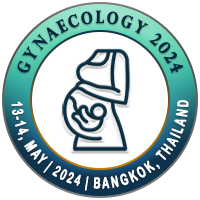
WeiLei-Dong
University of South China, ChinaTitle: Female vaginal self-sampling for cervical cancer screening: The trend and challenge
Abstract
In our quest to combat cervical cancer, the global healthcare landscape has embraced cervical self-sampling for human papillomavirus (HPV)-DNA detection as a transformative approach, particularly recognized for its ability to bridge disparities in cervical cancer rates. This method has become a cornerstone recommendation by the World Health Organization (WHO), given its potential to greatly expand screening coverage, and form an integral part of the global strategy aimed at the elimination of cervical cancer, especially in low- and middle-income countries where the incidence of the disease is most acute.
Accentuating this progressive shift, recent studies shed new light on the role of DNA methylation biomarkers in the detection and screening of cervical cancer. The adept utilization of DNA methylation in the identification of cervical carcinoma in situ and cancer has exhibited impactful clinical benefits and the promise of global applicability. Additionally, the WHO has acknowledged the crucial function of DNA methylation markers as an effective triage tool for individuals tested positive for high-risk HPV.
DNA methylation assays, especially those focused on the methylation of PAX1 and JAM3 (PAX1m/JAM3m), have demonstrated their utility in detecting CIN3 lesions. These findings reinforce the potential that these biomarkers have in halting the progression of cervical precancers. Our clinical study delves into the practical value of detecting PAX1m/JAM3m through cervical self-collected specimens, aiming to refine cervical cancer screening and improve care for both premenopausal and postmenopausal women.
To conclude, we stand at the cusp of a pivotal era where self-sampling and DNA methylation detection coalesce to forge a promising frontier in cervical cancer screening. The accruing evidence points toward a future where these methodologies not only elevate screening precision but also enhance early detection rates. Embracing these innovations could be truly game-changing in the effective management and eventual diminution of cervical cancer incidence globally.
In this specialized presentation, we will conduct a thorough analysis of the significance of cervical cancer screening and the WHO eliminate cervical cancer program. We will examine various aspects including the global incidence of cervical cancer, clinical guidelines for diagnosis and treatment, current screening protocols, as well as the limitations associated with current screening practices. Furthermore, we will delve into the significance of self-sampling for the detection of HPV and methylation, comparing data obtained from HPV detection to methylation detection results. This examination will illuminate the potential of self-sampling as an efficacious method for detecting both HPV and methylation markers in the context of cervical cancer screening.
Biography
Weilei Dong completed her doctoral degree at Southern Medical University. She is the chief physician and associate professor, and the director of the department of obstetrics, gynecology, and reproductive medicine at the First Affiliated Hospital of University of South China. In addition, she has also served as a member of multiple academic committees.

